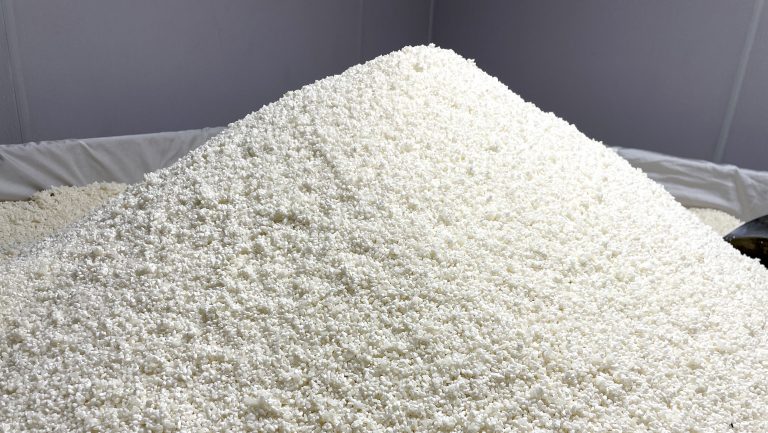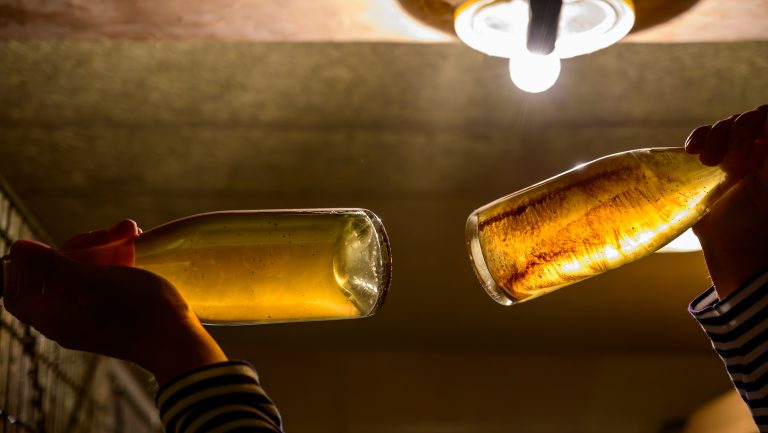Leave it to science to start a war on the floor. According to researchers, women have a more pronounced sense of smell.
Something about this has been known since the 19th century, when researchers in France found women to be more sensitive to the smell of camphor than men, with women recognizing camphor at 1 part per 100,000 in water, and men at 9 parts per 100,000. Numerous other studies have also shown that women excel at odor identification, including a 1982 study in which women outperformed men by identifying 74 of 80 common odors.
Then, in the 1980s, Richard L. Doty, a professor of otorhinolaryngology and the director of the Smell and Taste Center at the University of Pennsylvania, and a team of researchers designed the Smell Identification Test, which asks subjects to identify 40 odors. When the test was later used in a study on sex differences and the ability to identify odors—the results were published in 1985 in the journal Neuropsychologia—women consistently outperformed men. The test has since been commercialized and used in a myriad of ways, including the study of air pollution and olfactory dysfunction and the diagnosis of Alzheimer’s disease.

Don’t miss the latest drinks industry news and insights. Sign up for our award-winning newsletters and get insider intel, resources, and trends delivered to your inbox every week.
Beyond merely identifying odors, however, Doty says women also seem to perform better than men in detecting odors at the lowest levels of concentration, and in tests of odor discrimination and memory. In the late ’90s, a research study used MRIs to examine the volume of the brain activated when men and women were subjected to olfactory stimulants The MRI activation maps for the women’s group showed up to eight times more activated voxels (by analogy with “pixels,” “voxels” are an element of three-dimensional space) than the men’s group in specific regions of the brain.
In the mid-2000s, researchers set out to understand another facet of the subject: whether women might have more cells in the olfactory bulb—the relay station that transmits smell information from the nose to the brain. In fact, they do. Women have 16.2 million cells in their olfactory bulb compared with men’s 9.2 million—and 49.3 percent more neurons, according to the study, “Sexual Dimorphism in the Human Olfactory Bulb: Females Have More Neurons and Glial Cells than Males,” which was published in 2014 in the journal PLOS ONE.
Some theories suggest that the more refined sense of smell in women could have evolved as a means of kin bonding or for protecting fetuses, yet how it happened and why the fairer sex gets a fairer shake when it comes to the sense of smell remains a mystery.
“It’s not really well [understood],” says Doty, “but it probably has to do with the early development of the brain. It starts out before puberty and extends through the years.” He adds that in people over age 65, there’s an even greater differential between men and women, although he suggests that that may be due to the fact that the male epithelium is more likely to become damaged over time.
And then there’s the issue of hormones.
The Pregnant Nose
By now, anyone who has ever stepped inside the women’s room of an American bar knows that the Centers for Disease Control and Prevention, or CDC, wants women to understand that alcohol consumption can be bad for a fetus. Perhaps, as some experts suggest, it’s alcohol’s potential for harming a fetus that can make pregnant women averse to its smell.
Abigail Maletis, cofounder of the Seattle-based grower Champagne importer Fat Cork, was just learning about Champagne when she was expecting her first child. Her heightened sensitivity to alcohol made her first three months miserable. Her heightened sensitivity to trichloroanisole (TCA) provided a vital education.
“We were doing so many tastings at that time,” says Maletis, “and I could literally smell when a bottle was corked from across the room. It was unbelievable. I had a sixth sense of smell.” And while her bionic power has since faded—she sometimes has to taste a wine in addition to smelling it to know whether it’s corked—the knowledge it provided has stuck.
Winemaker Brianne Day, of Oregon’s Day Wines, knows the feeling. “I don’t know what it is to be a man,” she says. “I don’t know what their sense of smell is like. I can only speak about my sense of smell. I’ve noticed that people who seem to have the highest sensitivity to cork taint always seem to be women. Not to say all women can smell TCA better than all men, but when I’ve worked with different wineries and different crews, it always seemed to be the women who were most sensitive to it.”
Day herself has always been sensitive to sulfur, cork taint, and brettanomyces, and says she picks up easily on volatile acidity, but since becoming pregnant—she was due in August—those sensitivities have risen to a whole new level. And it’s not pleasant.
“You’d think having a really enhanced sense of smell would be kind of nice because you could smell wines better,” says Day, “but it’s almost like it’s so strong, it’s distressing. It’s hard to get a good read on ‘Is this wine super flawed, or am I just being sensitive?’”
“It goes beyond just having a strong sense of smell,” the winemaker says. “Characteristics of the wine [are] out of proportion to what they probably taste or smell like to other people—and those who aren’t pregnant.”
To manage the oversensitivity during her pregnancy this year, Day had to rely on processes she set up last harvest, and the occasional second opinion. “If a wine that I know for a fact is under 12 percent alcohol is coming across as hot to me, I have to say, ‘Okay, I’m going to let this slide; I know it’s not hot.’”
A Rose by Any Other Name
Does having more neurons and glial cells, and being better at detecting aromas, make one a superior winemaker or somm? Not necessarily. For some, all of the extra details and minute aromas are distractions. Having too much going on in the nose—or being too sensitive to certain compounds—can actually make competitions, blind tastings, and the identification of grape varieties and regions more difficult.
“Just as the fastest person in the world doesn’t make the best soccer player, or the strongest person in the world doesn’t make the best wrestler, [wine] tasting is so much more than just being able to taste the compounds,” says Rob Ord, prestige manager for Treasury Wine Estates in California and a former diploma instructor for the International Sommelier Guild. “It’s being able to put everything together in the puzzle.”
Moreover, says Ord, it’s impossible to be able to smell something—or at least to identify a smell—unless it’s been described, defined, or imprinted in memory with a label attached. “It’s very difficult,” he says, “to be able to pick out those compounds and say, ‘Oh yeah, this smells like peach,’ unless you’ve actually spent time smelling peach and really defining that in your palate.” Even people with the most sensitive olfactory bulbs won’t be able to break down an incredibly aromatic wine if they can’t name or define what they’re smelling.

Dispatch
Sign up for our award-winning newsletter
Don’t miss the latest drinks industry news and insights—delivered to your inbox every week.
When she’s not writing about beverage, travel, or weird science, Julie H. Case can be found deep in America’s forests, foraging for mushrooms.







